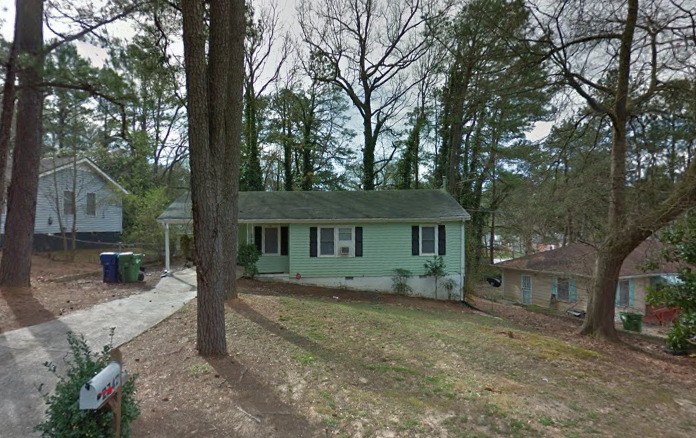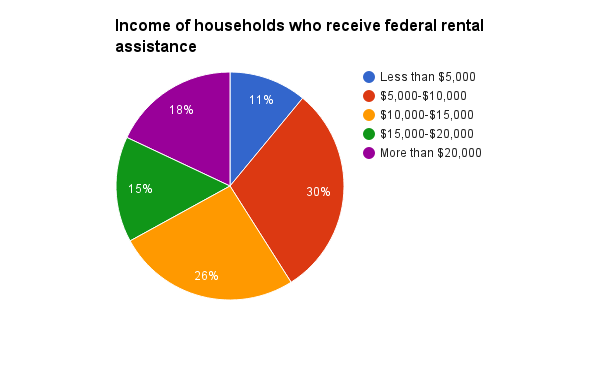Myths and misperceptions surrounding public housing and the people who live in it
_(1)_800_583_90.jpg)
The majority of federally subsidized housing isn't government-owned high rise complexes. Here is some in Seattle. Image by Brett VA licensed under Creative Commons.
A lot of Americans believe things about federally subsidized housing that simply aren’t true. You’ll sometimes hear things like, “most federal housing assistance just means people living in government-owned high rises,” or “people who get housing assistance don’t work.” Thankfully, we have data to investigate these beliefs. Let’s look at four of the biggest myths.
Myth: Most public housing means big projects
Let's start by defining “public housing.” When many folks hear those two words, they think “people living in government-owned high rises.” There are a number of misconceptions to unpack here. First, the majority of federal housing assistance recipients don’t live in government-owned buildings at all. Only about a quarter do.
The plurality of these households, rather, use housing choice vouchers (not to be confused with Section 8, which I'll explain in just a moment): they find a rental on the private market, and the Department of Housing and Urban Development subsidizes their rent by paying private sector landlords.
Check out the photo below, of a place in Atlanta you can rent with a housing choice voucher:
Image by Google Maps.
The landlord is asking for $995 a month in rent. As a voucher holder, you’d pay a third of your income toward that rent and HUD would make up the difference between that amount and $995.
Households who actually live in public housing, which is administered by local housing authorities, represent about 23% of the total population of federal assistance recipients. Meanwhile, households in the confusingly-named “section 8 project based” program have private sector landlords— but this program attaches the voucher to the rental unit, not the family (for a period of time agreed upon by the government and the private landlord).
The government’s elderly and disabled programs subsidize private sector construction and building operations. In turn, those landlords agree to reserve some of their units for the elderly or disabled for a period of time. And the USDA rental program provides loans to the private sector, as well as subsidies for rural residents to rent on the market.
Chart created from the 2015 Center on Budget and Policy Priorities analysis of HUD and USDA data. Image by the author.
So most people who receive housing assistance live in private sector housing, not the big complexes people often think about. Try checking out the housing choice voucher offerings in a friend or relative’s hometown, for example. More likely than not, many are single family homes.
It’s worth mentioning a corollary of all this: the broader the area in which people can use vouchers, the less concentrated poverty will be. If well-off folks allowed rental units in their neighborhoods, they’d let low-income families live closer to safe streets, parks, grocery stores, jobs, and well-resourced schools.
Finally, most of the households that do live in true public housing don’t live in high-rises. The majority live in buildings with fewer than five stories, like garden apartments, walk-ups, townhouses, and single family homes.
Myth: Most housing assistance recipients don’t have jobs, and they’re all black
Housing assistance programs help loads of white people: 34% of household heads that receive federal housing assistance identify as non-Hispanic white; 42% identify as non-Hispanic black.
Chart created with 2015 HUD data. Image by the author.
And consider who all these folks are along other dimensions. In a third of these households, the householder or their spouse is elderly; in another fifth, the head is disabled. Among the remaining 46% of households with working-age, able-bodied adults, most (35% of the total) have children. Only 11% of recipient households are headed by a working-age, able-bodied, and childless adults..
Chart created with 2015 HUD data. Image by the author.
Among households that had working-age, able-bodied heads and spouses, 62% were currently working or worked in the last year, according to a Center on Budget and Policy Priorities report that looked at Housing Choice Voucher, public housing, and project-based rental assistance participants. Another 11% of the total participated in Temporary Assistance for Needy Families, which has work and job-seeking requirements. Almost half of the remaining 12% of households had a pre-school age child or disabled individual.
Myth: Subsidized housing generally lowers surrounding property values and increases crime
This is a good example of conflating cause and effect. As Emily Badger recounts in an excellent short history of federal housing programs, “public housing” is often associated with crime and decay because these programs too often place participants in neighborhoods that already have low property values and high crime.
The housing program participants didn’t cause these problems; a racist history of segregation and disinvestment did, by isolating black and poor Americans in certain neighborhoods.
As Badger explains, when the United States Housing Act paved the way for public housing construction in 1937, white Americans were primary beneficiaries. Jimmy Carter, Howard Zinn, Starbucks founder Howard Schultz, and Goldman Sachs CEO Lloyd Blankfein all grew up in public housing. Elvis lived in public housing as a teenager, as did Barbra Streisand and Kenny Rogers.
But then Federal Housing Administration subsidies and loans were made available to white Americans, who left for the suburbs. Black Americans were prevented from following through redlining, restrictive covenants, zoning, workplace segregation, and acts of terrorism. Public housing residents didn’t cause these problems.
And, for what it’s worth, longitudinal studies have studied this question in detail and found that subsidized housing often doesn’t lower property values or increase crime, especially if some basic lessons are adhered to— like balancing the number of children and adults. Indeed, a recent Stanford study found that subsidized housing built in low-income areas can actually raise nearby property values.
Myth: Housing subsidies worsen recipients’ lives
It’s important to consider possible counterfactuals for families living in subsidized housing: cycling between friends’ and relatives’ couches, or homelessness.
A 2016 NBER working paper compared siblings that spent differing amounts of time in public housing, which helps control for confounding factors attributable to each family. The authors found that each additional year a girl spent in public housing increased her annual earnings at age 26 by an average of $488 and lowered her risk of imprisonment by roughly 11%.
The figures for girls in families with housing vouchers were similar; boys had smaller, but still statistically significant, positive effects.
Myth: The middle class doesn’t get these kinds of housing subsidies
This is false in at least two big ways. First, homeowners (who are disproportionately middle-class and wealthy) get a giant subsidy called the mortgage interest deduction. Renters don’t get this— they don’t get to deduct part of their rent payment from their taxes. And as Matt Yglesias points out, this tax subsidy dwarfs federal spending on all low-income housing programs.
It’s not even close. Chart created with date from the 2014 Congressional Budget Office and Treasury analysis. Image by the author.
As Dylan Matthews writes, the mortgage interest deduction is insanely regressive: the bigger your house, the bigger your mortgage, and the bigger your tax liability, the bigger your savings through this deduction. This is why half of the total subsidy goes to the top decile of American households, while the bottom quintile gets virtually nothing. And there's an even bigger subsidy homeowners receive, called the “exclusion of imputed net rental income,” but that's a subject for another post.
A closing thought
I should say: though I’ve thought about this stuff, I’m not an expert, nor have I lived in public housing. I'm eager to hear your thoughts if you’ve studied public housing, or lived in it. Everyone would benefit from hearing your perspective.
